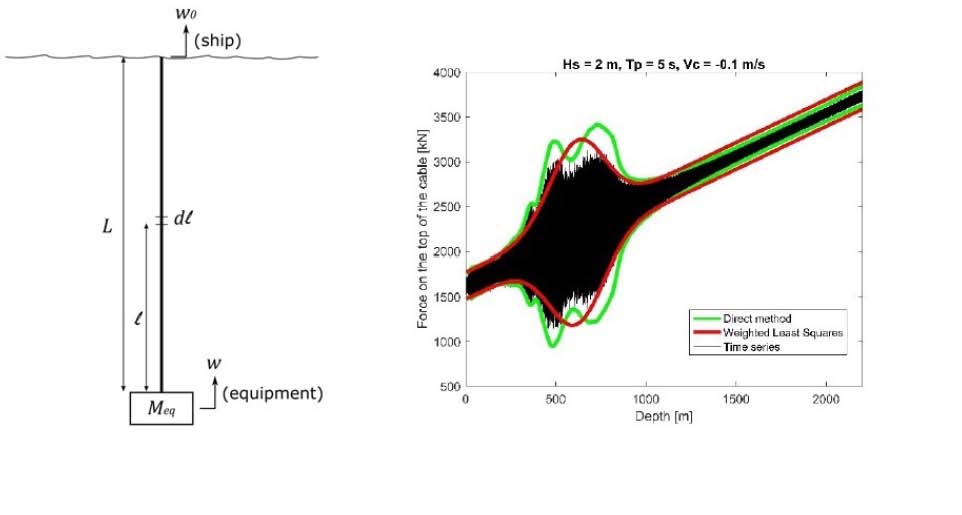Our research is based on Structural Topology Optimization and Multiphysics/Multiscale Analysis, including studies on new numerical evolutionary methods and bio-inspired design strategies. Jump to Current Research or Former Research to know more.
Current Research
Multiscale topology optimization of thermoelastic structures considering multiple materials
Lidy Marcela Anaya Jaimes: Thermoelastic structures are structures subjected to thermal and mechanical loads where the properties of the materials, which they are composed, play an important role in its behavior. Due to this, this research focuses on the analysis and the topology optimization of thermoelastic structures considering the macroscale, the microscale and concurrent topology optimization using multiples materials.
Macro and Micro Structure Optimization
Topology optimization of metamaterials
Lidy Marcela Anaya Jaimes: A metamaterial is an engineering material with properties that are not found in nature. This research focuses on the analysis and topology optimization of metamaterials using inverse homogenization and the BESO method to find the distribution of multiples materials within a cell to obtain a desired property considering a constant thermal load.
Micro-Metamaterial and Deformed Structure
Topology optimization of piezoelectric energy harvesting devices
Breno Almeida: Topology optimization of piezoelectric energy harvesting devices using finite element discretization and the Bidirectional Evolutionary Structural Optimization (BESO) method. This research’s motivation is the increasing demand for cleaner energy and more efficient electric systems. With the advances on 3D printing technology, more sophisticated structures may be manufactured, thus, increasing the viability of producing efficient topologically optimized energy harvesters. The gif shows the evolution of a beam-like periodic harvester along the optimization process.
Structural Topology Optimization for High Natural Frequencies and Band Gaps
Heitor Lopes: This research adresses the optimization of a structure’s natural frequencies using the Bidirectional Evolutionary Structural Optimization (BESO) method. This includes maximization and minimization of eigenvalues, as well as maximization of the separation of two consecutive ones. In addition to studying and proposing new methods for natural frequency optimization (particularly for high-frequency range), the influence of structural periodicity and the band gap phenomenon are analyzed.
Large Scale High Performance Computing Topology Optimization
Hugo Idagawa: Application of the Bidirectional Evolutionary Structural Optimization (BESO) method to solve large 3D problems. This research focuses on the parallel implementation of the BESO method using Multi-CPU or GPU strategies. The figure shows the evolution of a MBB beam problem comprised of 5.184M elements (15,856,203 DOFs) that was solved using a multi-CPU approach. The computational resources were provided by the Center for Computing in Engineering & Sciences (CCES) at University of Campinas (UNICAMP).
Pressure-actuated Compliant Mechanisms Topology Optimization
Vitor Hugo Lopes Costa Lima: Topology optimization of Compliant Mechanisms considering fluid pressure as the input force. The input pressure must produce a desired output displacement transmitted by the mechanism deformation. This research addresses a design-dependent problem, where the load changes as the topology evolves.
Gripper Mechanism Topology Optimization
Former Research
Fluid-structure Topology Optimization
William Vicente: The general aims of this research project is to combine the evolutionary topology optimization techniques with multiphysics problems involving fluid-structure interaction. Different physical problems (e.g., structures and fluids) interacting with each other are considered, especially when the interfaces between each domain is allowed to move during optimization. A discrete optimization method named Bi-directional Evolutionary Structural Optimization (BESO) is used. The discrete design scheme of the BESO allows different physical domains to be modeled straightforwardly with explicitly defined interfaces.
Topology Optimization of fluid-actuated cellular mechanisms
Daniel Cunha: Topology optimization of fluid-actuated cellular mechanisms using the Bidirectional Evolutionary Structural Otimization (BESO) method. Inspired by biologic mechanisms of some plants, a class of cellular fluid actuators was described and optimized. By pressuring the fluid inside the actuation cells, the mechanism changes its kinematic configuration and performs a desired movement. Large displacements and deformations are considered: together with the strain tensors nonlinearity, there are nonlinear effects due to hydrostatic loading on moving boundaries.
Analysis and Topology Optimization of Rotating Machineries
Evandro Carobino: Due to its large applicability to the industry, it is interesting to develop and apply techniques to simulate and optmize rotating machineries. Through modifications of the rotor’s topology, this research deals with the separation margin of the nominal rotor speed with respect to resonance regions. The algorithm obtains an optmized distribution of the design variables by maximizing or minimizing natural frequencies as well as taking in account damping and gyroscopic effects. Collaborative Project with Prof. Jarir Mahfoud of LaMCoS at INSA-Lyon.
Second Mode shape and Shaft Diameter Optimization
Nonlinear dynamics of subsea lifting operations
Rodrigo Tommasini: This research focuses on the study of the nonlinearities that arise in deep water subsea lifting operations. Aspects such as stochastic excitation, variable length cable models, super-harmonic resonances, amplitude dependent hydrodynamic coefficients, nonlinear synthetic cables, and non-stationary time series have been considered throughout this project, leading to a better understanding of these phenomena and providing accurate tools for the industry to plan and execute these operations. This project has been sponsored by Petrobrás and has been conducted in cooperation with the University of Bristol, UK.
Lifting Operation model
